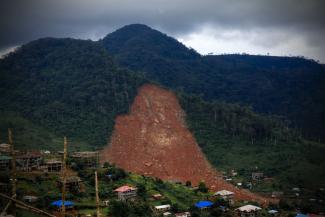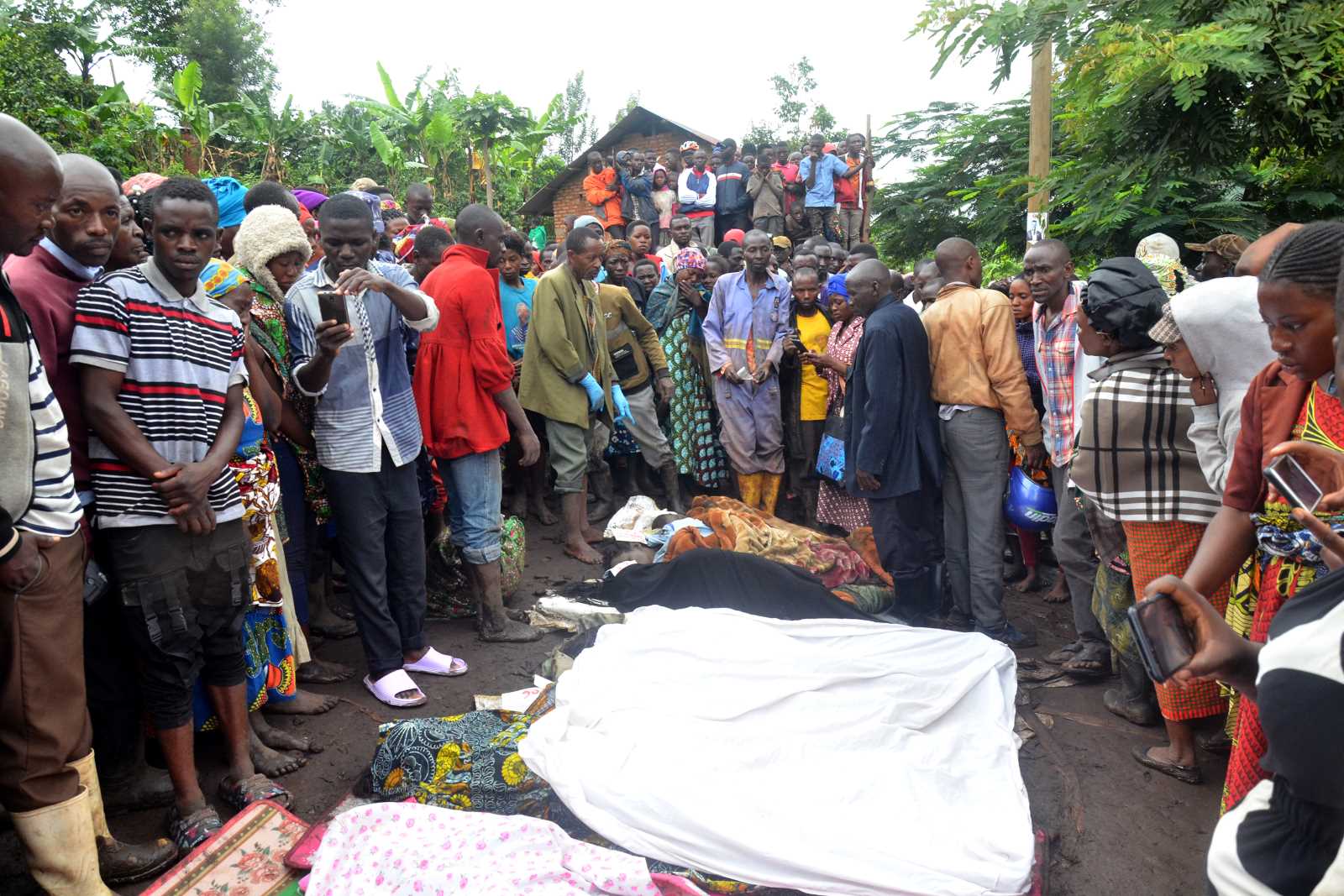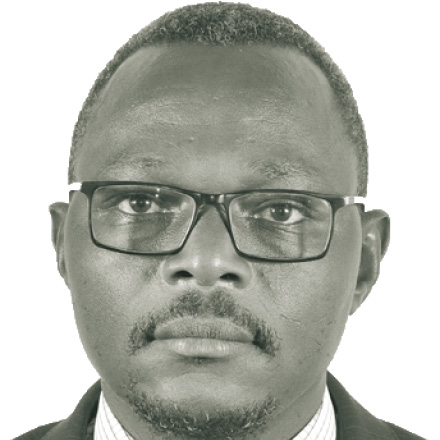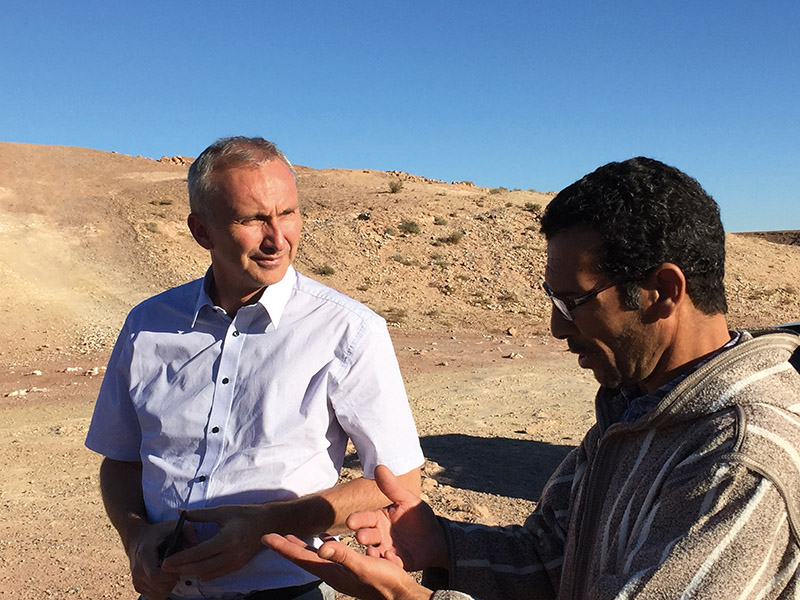Urban development
The need for holistic action

Sierra Leone has faced a share of obstacles on its path toward development. While resources were absorbed by a lengthy civil war and a two-year battle with Ebola, masses pursued their hope of a better life in the nation’s capital Freetown. Homes and even entire communities were built by hand, on pieces of land where there had once been nothing but pristine forest.
Then, on 14 August 2017, days of heavy rainfall and flooding in the western area of Freetown culminated in a massive landslide, swallowing people and homes in a thick bath of mud and debris. Over one thousand people were declared dead or missing. The World Bank estimates that thousands more were displaced – many left with nothing but the clothes they were wearing.
Neither flooding nor landslides are new phenomena in Sierra Leone, but a humanitarian catastrophe of such epic proportion drew international attention. Already in the country, numerous international organisations acted immediately, providing basic supplies and services – from food and shelter to personal counselling and mobile phones. Among others, Action Against Hunger, CARE International, GOAL, Handicap International, Muslim Aid, Plan International, Red Cross, Save the Children, Streetchild, Trocaire, UK Aid, World Vision and various UN agencies were involved.
The tragedy, however, extended well beyond the loss of capital. The situation reflected a complex system of mutually-reinforcing causes and consequences – some of which had been in the making long before the disaster – and would require a holistic long-term response.
The government of Sierra Leone commissioned a national recovery strategy, emphasising the need for an approach that would not only address existing problems, but would also anticipate future challenges. Within days, experts procured by the UN Development Programme (UNDP) and the World Bank were arriving in Freetown to assess and inform this effort.
Regulatory structure
It is not quite accurate to refer to a landslide as a disaster. Muhibuddin Usamah, a landslide specialist, points out: “Landslides are a natural phenomenon.” Disasters occur when people are living in their path.
Homes in Freetown are situated on steep slopes, on top of highly weathered rocks, many of which are prone to erosion. As the urban population has grown, forest has been removed and soil has been cut away vertically to make the flat surfaces on which informal settlements are established. The natural counter weight that would normally hold existing soil in place was inadvertently removed, making houses more vulnerable. At the same time, excessive charcoal consumption has resulted in deforestation and increased erosion.
Usamah’s assessement is: “Many people had specifically chosen to live in the areas that were geographically vulnerable. For their immediate survival, they wanted to be close to water and firewood, social services and commercial centres. They perceived that they were making wise choices – and there was nothing preventing them from doing so.”
Usamah worked closely with the national Environment Protection Agency (EPA), identifying the root causes of the landslide as a basis for what he calls “risk-informed planning.” Evidence-based laws and policies can better guide both municipal and community decisionmakers, resulting in safer living practices.
Behavioural change
In the meantime, there are many things that communities can do right away to reduce their exposure to health and hazard risks and also improve the general standard of living.
As the local and national authorities acknowledge, urban flooding has been correlated to the combination of heavy and prolonged rainfall and poor drainage systems in Freetown. According to Thorsten Kallnischkies, a waste management expert, drains between houses are frequently blocked – not only by soil and rock, but also by household and commercial waste. Because these drains cannot accommodate intense rainfall, water accumulates until there is enough force to propel massive rocks. “Imagine a rock as big as a Toyota Landcruiser, travelling at the speed of 10 kilometres an hour, hitting houses and people.”
Another problem was that flooding had washed faeces and other waste into rivers, streams and wells. People were literally bathing in – and drinking – contaminated water. As Kallnischkies points out, “even moderate rain can carry waste into open water sources.”
So things as basic as “cleaning up” can make a big difference – reducing the possibility of flooding while also addressing its consequences. To this end, Kallnischkies helped to design a UNDP-funded project in which affected communities were engaged in their own recovery and reconstruction processes. Their very first tasks included clearing rocks and waste from rivers and streams, reconstructing damaged drains and building cement walls around drinking water wells.
Getaneh Gebre, the project coordinator, explains that it is not only a matter of training people to carry out these activities. “We wanted participants to see themselves as part of a larger picture – to understand natural causes and effects, to understand the impact of human action on the environment, and to use that knowledge to affect positive outcomes.”
This holistic approach was reflected in other activities – like cutting straight, angular slopes into terraces to grow root vegetables. Not only does this reduce slope erosion and strengthen soil, it also provides communities with food and incomes. Household compost can be used to provide nutrients to crops and, because the organic material in compost is moisture-absorbent, the flow of water into rivers and streams will be further reduced.
The most enthusiastic participants in the group were identified and provided with further training, equipping them to become leaders and to train other working groups. The idea was to create a system of information and skill transfer that could be sustained even after the project had been concluded – and ultimately, to affect life-saving behavior change.
Urban infrastructure
While floods may have brought it to attention, managing increasing volumes of solid waste is a long-term challenge. On average, Freetown’s 1.5 million inhabitants produce 0.5 kilogrammes of solid waste per head and day – an approximate total of 1.1 cubic metre per year. Of this, 20 percent is collected, but the remaining 80 percent tends to be disposed of in drains, directly into the sea or burned.
Vast and overflowing, the two inner-city dumpsites serve as a breeding ground for flies, rats and mosquitos. Toxic leachate contaminates groundwater, surface water and coastal ocean water. According to the Freetown City Council, seven out of the ten leading diseases reported to hospitals in Freetown can be directly or indirectly related to pollution. Cholera outbreaks have been concentrated among populations living in close proximity; and open burning of waste contributes to the kind of danger that Kallnischkies compares to continuous inhaling of cigarette smoke.
Compostable or recyclable waste is proportionately very high in Freetown, comprising an estimated 80 to 90 percent of the total, as Kallnischkies reports. This means that relatively simple things like community composting have the potential to divert the majority of municipal waste.
Formal recycling operations are also relatively new, and UNDP has initiated a project in which some communities are using discarded plastic to produce handbags, computer bags, hats and even floor tiles – reducing the volume of waste while also generating household income.
However, the limitations of low-budget, community-owned initiatives must be acknowledged. The volume of waste that has accumulated in Freetown reflects decades of neglect and is set to worsen. What has been a matter of public health must now be recognised as a national safety issue. There is no small-scale solution.
Sierra Leone will need to develop a national waste-management infrastructure: a regulated system with staff, vehicles and oversight. It will also have to deal with the mountains of waste that already exist. Pits will need to be sealed off and new deposit sites located. This is estimated to cost several tens of millions of dollars which, to many donors, is prohibitive.
“But you can’t just fix one point,” insists Kallnischkies, “because whatever you address will fail under the pressure of the other elements.” And nowhere is this more apparent than in flood response: enthusiasm has been overwhelming and initiatives admirable. But long-term issues stay buried.
Carolyn Williams-Gerdes is a Berlin-based writer and photographer. She works frequently with the United Nations and was a member of the emergency response team, coordinated by the UN Development Programme, following the 2017 landslide. The views expressed in this article are those of the author and do not necessarily represent those of the UN, the UNDP or UN member states.
carolyn.williams.gerdes@gmail.com














